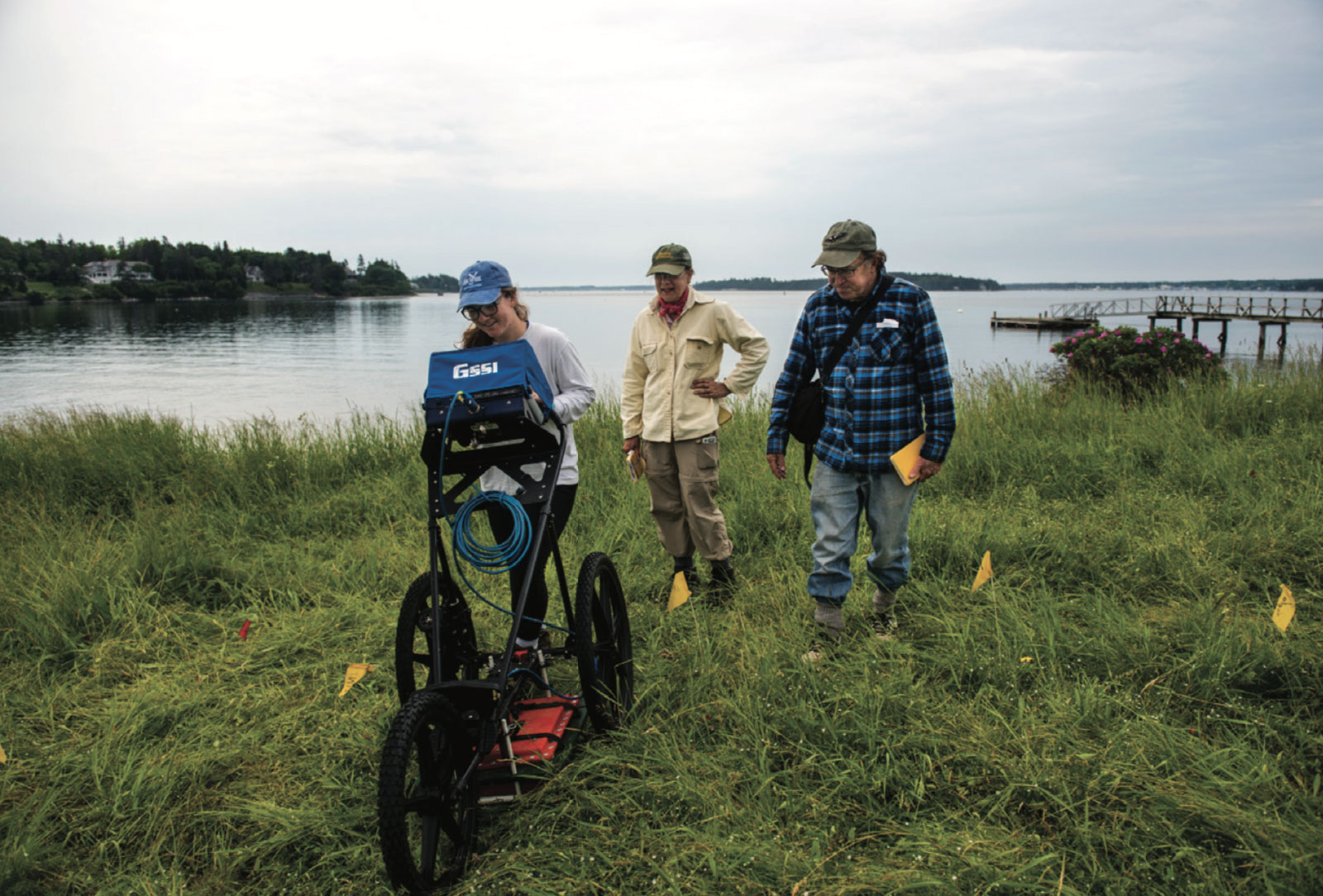
UMaine Geoarchaeologist Profiled In The New York Times
Alice Kelley (Department of Anthropology, Climate Change Institute, and Earth and Climate Sciences) and her colleagues were recently profiled in the “Science Times” section of the New York Times (10/24/17).
Working with Joseph Kelley (Earth and Climate Sciences & Climate Change Institute, University of Maine), Arthur Spiess (Maine Historic Preservation Commission), Daniel Belknap (Earth and Climate Sciences & Climate Change Institute, University of Maine), and graduate student, Jacquelynn Miller (Earth and Climate Sciences), Dr. Kelley’s Maine Sea Grant-funded research is exploring a new geophysical approach to assessing Maine shell midden areal extant and thickness and developing a citizen science approach to monitoring erosion of these important cultural and paleoenvironmental resources.
Maine’s coast hosts over 2,000 shell middens. These accumulations of human-deposited shells, artifacts, and faunal remains record the past 4,000 years of Native occupation of the coast. Additionally, they preserve one of the only records of paleoenvironmental information on the western Gulf of Maine.
Virtually all are eroding in the face of sea level rise, and work conducted as part of this study indicates that some have already been lost to the sea.
The group is exploring the use of ground-penetrating radar (GPR) as a tool to evaluate existing shell middens. While GPR has been used as a stratigraphic tool at shell midden sites, it has not been used as a cultural management tool in the evaluation of such sites. The researchers hope that use of this noninvasive and rapid technique will provide data that will inform excavation and management decisions, and will be applied to archaeological sites beyond Maine.
Drs. Alice Kelley and Arthur Spiess are also developing a citizen science monitoring program based on recommendations resulting from a stake-holders meeting held as part of the project in summer 2017. Kelley and Spiess are working to devise a protocol that will allow year-round and summer residents of the state to collect data about erosion rates and disturbance at coastal shell middens, as well as recording artifacts that are found on adjacent beaches.
